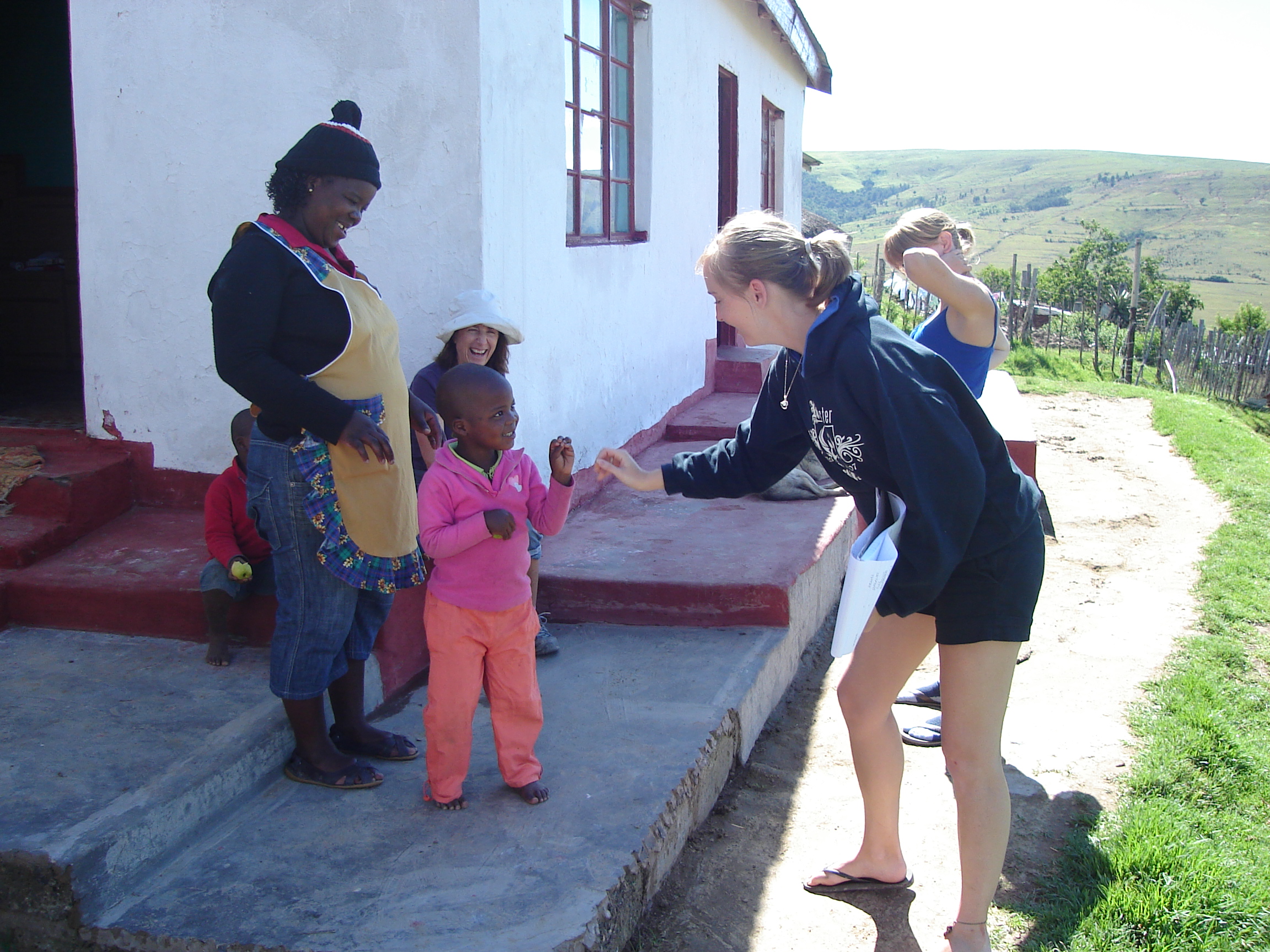Language students experience Xhosa culture, first hand


Each year, Dr Tessa Dowling takes a group of her Xhosa Communication students to Cata, a small rural village located near Qoboqobo in the Eastern Cape. The field trip is designed to immerse students in the culture and traditions of African family life, whilst enabling them to hone their language skills. It is also an emotional and eye-opening experience from which no one returns the same.
Cata, which in isiXhosa means ‘to add a small amount’, is a picturesque village located in the former Ciskei. From the 1930’s onwards, it was a site of traumatic forced removals and dispossesion under the apartheid government. “During apartheid, villagers were subjected to forced removals under the guise of a ‘betterment programme”. The aim being to reduce their wealth and confidence as powerful, successful farmers and to create division amongst an otherwise united community” says Dr. Dowling who is a senor lecturer in African Languages at UCT. In 2008, she was commissioned by the Border Rural Committee to establish language workshops for families who were hosting ‘homestays’ for foreign researchers but finding it difficult to teach their home language to their visitors. In this next extract, she describes the sights and sounds of Cata as well as her observations on the student summer field trip:

You wake up to the sound of people greeting each other with loud friendliness, reminding one of that Telkom advertisement “Molo, mhlobo wam!” where the two pensioners phone each other but still shout their greetings across the hills. Children, slightly dusty from playing with the piglets outside the house, crawl into bed with you and teach you, with an air of sophisticated tolerance: Yingubo (It is a blanket), Yifestile (It is a window) and laugh at the way you say their names “Olwethu” (ours), “Asekhona” (they are still around), “Siyabulela” (we give thanks). And go absolutely hysterical when you attempt a click “Yingxaki!” (It is a problem!) They follow you to the loo, which is just the other side of the spinach field, and hold the wobbly door shut while you pee, looking out across a view that is almost cheeky with undiscovered charm. This is the Xhosa Communication field trip, which in previous years has been generously financed by the Vice-Chancellor’s special fund. Once a year, from 2010 to 2012, I bundled up eager Xhosa Communication students, and took them to Cata, a tiny village just outside Qoboqobo (Keiskammahoek) near Qonce (King William’s Town).
I never knew exactly what they were expecting, my students, but after a 17-hour bus trip followed by a hilarious taxi ride into the village, the taxi driver inseparable from his cellphone and smilingly reassuring us – “Akhongxaki, akhongxaki” (no problem, no problem) – as he one-handedly lurched us across yet another pothole or weaved through a herd of sheep, the conversations about boyfriends and food and learning Xhosa turned into an oneiric hush as we swerved into the main street of Cata. My students suddenly realize it is two weeks here, and there isn’t a Woolworths in sight. Or a place to plug in a hairdryer. Or a loo that flushes. They are here for the reason they are here: to listen to Xhosa, to speak Xhosa, to dream in Xhosa, to make friends. And it works! These field trips have created softer, gentler, humbler students (the best kind for learning a language), more willing to admit their language skills will only improve if they integrate, try to communicate with people in a society where English is not that important, but water is.

The 2014 class have been hard at work all year fundraising for the next trip which is scheduled to take place in Januaury 2015. The group includes Xhosa first-language speakers who have not had the opportunity to learn their mother-tongue formally as a first language at school. There is also an ongoing research component to the Cata field trip. Dr Dowling will be in village next month as part of her research into language change in Xhosa. The first part of her study, which investigates the migration of Xhosa nouns and concords, has already been accepted for publication in the South African Journal of African Languages. The second part focuses on the use of Xhosa vocabulary and on the ways in which children assimilate English words into the urban Xhosa vocabulary. After studying language use in Cape Town, Dr Dowling observed that for instance instead of using the Xhosa word uphahla for roof, children use i-roof, instead of isiselo for drink they use i-drink. “I hope that what I discover will go some small way towards helping inform educational programmes and texts. Children need to learn the correct grammar and vocabulary of the language but educationalists also need to take into account that vocabularies shift and change all the time in all languages” says Dowling.
About Cata Cultural Village
‘Homestays’ in Cata afford the visitor an opportunity to stay with a family, sharing their food and experiencing their hospitality in exchange for a small fee. This type of accommodation arrangement is becoming increasingly popular with visitors to the Eastern Cape and simultaneously serves to boost the local economy. Cata Cultural Village coordinate eco-tours for vistors and there is a museum and